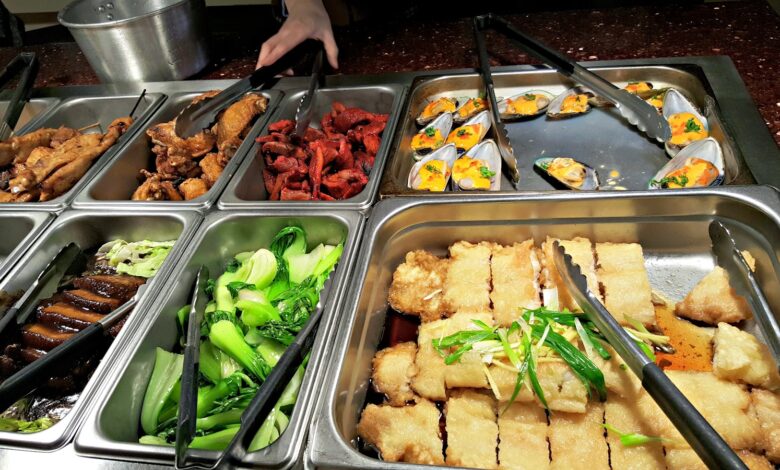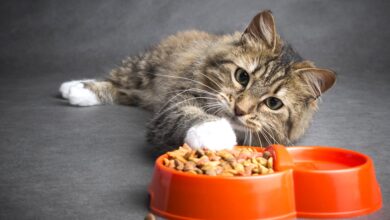
If you’re an avid bird-watcher or simply enjoy the beauty of nature, attracting hummingbirds to your yard can be a rewarding experience. One way to entice these tiny, vibrant creatures is by providing them with a steady supply of nectar, also known as Hummingbird Food. In this blog post, we will explore how to make homemade Hummingbird Food that is safe, nutritious, and irresistible to these beloved backyard visitors.
Understanding Hummingbird Dietary Needs
Hummingbirds are remarkable creatures with metabolisms that are among the highest in the bird kingdom. This high metabolic rate necessitates a diet that is rich in easily digestible sugars, which serve as the primary source of energy for these incessantly active birds. Nectar, with its high sugar content, forms the cornerstone of a hummingbird’s diet, mimicking the role of fast-acting fuel that powers their rapid wing beats and energetic lifestyle. However, it’s crucial to note that their dietary needs don’t stop at sugar alone.
- In addition to nectar, hummingbirds require proteins and other nutrients to support their physical health and development. These nutrients are typically sourced from insects and spiders. The consumption of insects not only provides hummingbirds with necessary proteins but also with essential fats, vitamins, and minerals that are not found in nectar. This balanced diet supports their muscular health, feather condition, and overall vitality, enabling them to perform their acrobatic feats of flight with precision and stamina.
- The understanding of these dietary requirements is essential for anyone looking to make their garden a haven for hummingbirds. By providing a homemade nectar solution that closely resembles the sugar concentration of natural flower nectar, you cater to their energy needs. However, encouraging a habitat that supports a variety of insects can also contribute to meeting their protein and nutrient requirements, ensuring a healthy, thriving hummingbird population in your backyard.
The Simple Ingredients for Hummingbird Food
Creating Hummingbird Food is surprisingly straightforward, requiring just two components you likely already have in your kitchen: plain white granulated sugar and water. This simplicity is crucial, as it’s vital to mimic the natural diet of hummingbirds as closely as possible without introducing harmful substances. When selecting sugar, ensure it’s the white granulated type; alternatives like raw sugar, brown sugar, and especially artificial sweeteners or honey, can pose health risks to hummingbirds. These substitutes can contain additives or lack the proper nutrients, leading to potential digestion issues or even disease in these sensitive creatures.
- Furthermore, while the vibrant hues of commercial nectar might seem appealing, it’s recommended to avoid incorporating red food coloring into your homemade mixture. Despite common beliefs, the coloring offers no nutritional value and could potentially be hazardous over time. Hummingbirds are naturally attracted to the color red, but you can attract them with the feeder’s color rather than the food itself. This approach ensures the health and safety of your feathered guests, allowing their stunning natural colors to shine through without the need for artificial enhancements.
- By sticking to these simple ingredients and guidelines, you’ll provide a healthy, energy-rich diet that closely resembles the nectar hummingbirds would find in the wild. This careful consideration helps create an inviting and nutritious environment for these mesmerizing birds, encouraging frequent visits to your garden or outdoor space.
The Ideal Sugar-to-Water Ratio
Achieving the perfect balance in your Hummingbird Food is crucial for mimicking the natural sugar concentration that these birds find in flower nectar. The optimal mixture for homemade nectar involves a precise sugar-to-water ratio of 1:4. This means for every one part of white granulated sugar, you should blend it with four parts of water. This ratio has been determined to closely resemble the sugar levels in natural nectar, providing the essential energy hummingbirds require without the risk of overconcentration, which could potentially harm their health.
- To prepare this mixture, start with hot water, as this helps the sugar to dissolve more efficiently, ensuring a smooth and uniform solution. The use of hot water is not just a matter of convenience but a necessary step for the sugar to fully integrate into the liquid, leaving no granules behind that could interfere with the feeding process or the health of the hummingbirds.
- It’s important to measure accurately to maintain this ratio, as deviations could either dilute the nectar, making it less attractive and less nourishing for the hummingbirds, or concentrate it too much, which could lead to potential health issues for the birds. Once the sugar is completely dissolved into the hot water, the solution should be allowed to cool to room temperature before it’s introduced to the feeder. This ratio not only caters to the hummingbirds’ dietary needs but also ensures the food you provide is safe and as natural as possible, encouraging regular visits from these enchanting creatures to your garden or outdoor space.
Step-by-Step Guide to Making the Nectar
Begin by bringing 1 cup of water to a boil. This initial step ensures that the sugar will dissolve completely, creating a smooth and consistent nectar. Once boiling, remove the water from the heat.
Next, carefully add 1/4 cup of white granulated sugar to the hot water. Stir the mixture vigorously until the sugar is fully dissolved and no granules are visible. This step is crucial for creating a homogeneous solution that closely mimics the natural nectar hummingbirds find in flowers.
After the sugar has dissolved, set the solution aside to cool. It is important to wait until the mixture reaches room temperature before proceeding to the next step. Filling the feeder with hot or warm nectar could potentially harm the delicate hummingbirds or spoil the nectar faster than if it were cooled.
Once the nectar has cooled, it’s ready to be transferred to your hummingbird feeder. Carefully pour the cooled nectar into the feeder, avoiding spills and overfilling. If there is any leftover nectar, it can be stored in a clean, airtight container in the refrigerator. Remember, this homemade nectar can be kept for up to one week when stored properly.
This simple, yet effective method ensures that you provide a safe and nourishing food source for the hummingbirds visiting your garden. By following these easy steps, you’ll create an inviting environment for these fascinating birds, fostering a closer connection with the natural world right in your backyard.
Cooling and Storing the Hummingbird Food
Once you’ve prepared the nectar, it’s essential to wait until it reaches room temperature before proceeding to fill your feeder. Introducing hot or even warm nectar into the feeder is not advisable, as it could potentially harm the delicate physiology of the hummingbirds or accelerate the spoilage process of the nectar, reducing its freshness and appeal. Cooling the mixture thoroughly ensures it’s at a safe temperature for the hummingbirds to enjoy immediately upon filling the feeder.
For any nectar that is not used right away, proper storage is key to maintaining its freshness for future use. Transfer the cooled nectar into a clean, airtight container and place it in the refrigerator. This practice will help preserve the nectar, allowing you to have a ready supply on hand for refilling the feeder, ensuring that the hummingbirds always have access to fresh food. The refrigerated nectar can be stored safely for up to one week.
Before using stored nectar, inspect it carefully for any signs of spoilage. Look out for cloudiness or any discoloration, which can indicate bacterial growth or fermentation, rendering the nectar unsafe for hummingbird consumption. If you observe any of these signs, it’s best to discard the nectar and prepare a fresh batch. This precaution helps prevent the spread of disease among the hummingbird population visiting your feeder, ensuring that your backyard remains a healthy and inviting habitat for these enchanting visitors.
Choosing and Filling Your Hummingbird Feeder
When it comes to attracting hummingbirds to your garden, the type of feeder you choose plays a significant role. Look for feeders that are primarily red, as this color naturally draws in hummingbirds. While there are many styles available, ensure the feeder is easy to disassemble for regular cleaning and refilling. A feeder with multiple feeding ports can accommodate several birds at a time, reducing competition and providing ample feeding opportunities.
After preparing the Hummingbird Food, allow it to cool to room temperature. Selecting the right location for your feeder is as important as the food itself. A shady area is preferable, as it helps to keep the nectar cool and slow down fermentation. However, make sure the feeder is visible to birds flying by and not too close to windows to reduce the risk of collisions.
Filling the feeder requires care to avoid spills. Use a funnel if necessary to pour the nectar into the feeder without overflowing. Fill it up to just below the feeding ports to prevent leaking. Once filled, securely fasten any lids or caps to ensure the feeder is sealed and ready for use. Hang the feeder at a height that is easily accessible to you for maintenance but out of reach of predators.
Regularly monitor the nectar level, especially during peak feeding times or hot weather, as the nectar can deplete quickly or spoil. Keeping the feeder well-stocked and in good condition will encourage hummingbirds to visit regularly, providing endless enjoyment and contributing to the health of these vibrant visitors.
Maintenance Tips for Hummingbird Feeders
Maintaining your hummingbird feeder is crucial to ensure the health and safety of the visiting hummingbirds. Regular maintenance prevents the growth of harmful bacteria and mold that could potentially endanger these delicate birds. A well-kept feeder also encourages more frequent visits, as hummingbirds prefer feeding from clean, fresh sources.
Every time the feeder is emptied, or at least once a week, disassemble it completely for a thorough cleaning. Use hot water mixed with a gentle soap to scrub each part, paying special attention to feeding ports and other areas where nectar can accumulate and spoil. A small brush or a toothbrush can be effective for getting into tight spaces. Rinse all components well to ensure no soap residue remains, as this could be harmful to the birds.
In addition to regular cleaning, inspect the feeder for any signs of wear and tear. Cracks or damage can harbor bacteria and make the feeder difficult to clean effectively. If any parts are damaged, replace them immediately to maintain a safe feeding environment.
After cleaning and inspection, allow the feeder parts to air dry completely before reassembling. This step is important to prevent mold growth, which thrives in moist environments. Once the feeder is dry and reassembled, refill it with fresh nectar, and it’s ready to be hung back up for the hummingbirds to enjoy.
By adhering to these maintenance tips, you help create a healthy and inviting space for hummingbirds, ensuring that your backyard remains a preferred stop for these fascinating creatures. Regular upkeep not only benefits the birds but also enhances your bird-watching experience, keeping these vibrant visitors coming back season after season.
Conclusion
Crafting Hummingbird Food in your own kitchen offers a unique opportunity to connect with nature and provide a supportive environment for these energetic birds. With a focus on their specific nutritional needs and preferences, you’re not just offering food; you’re creating a haven that supports their high-energy lifestyle and contributes to their overall wellbeing. The process, highlighted by a blend of simplicity and attentiveness, ensures that your garden becomes a vibrant gathering spot for hummingbirds.
Through the careful selection of ingredients and adherence to recommended practices for feeder maintenance and nectar preparation, you play a pivotal role in the lifecycle and daily joy of these fascinating creatures. Embrace this chance to witness the awe-inspiring beauty and aerial acrobatics of hummingbirds, right in your own backyard. This guide provides all the necessary steps to make this possible, empowering you to be an active participant in the preservation and enjoyment of hummingbird populations. Enjoy the flutter and buzz of grateful wings, and take pride in knowing you’ve contributed positively to the natural world.





